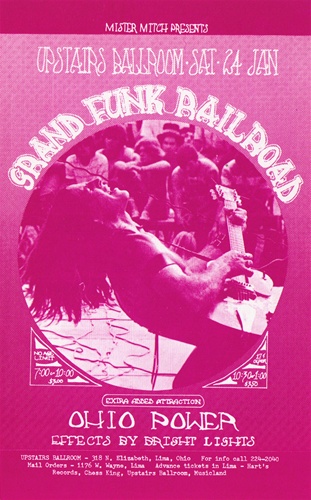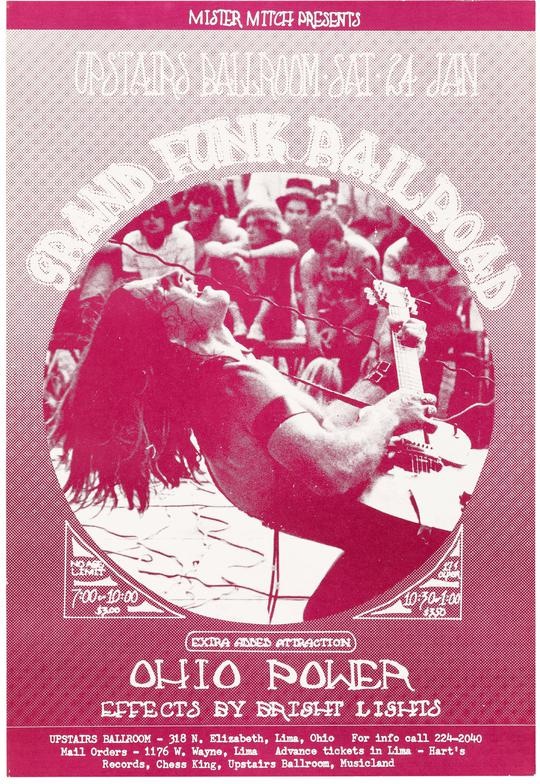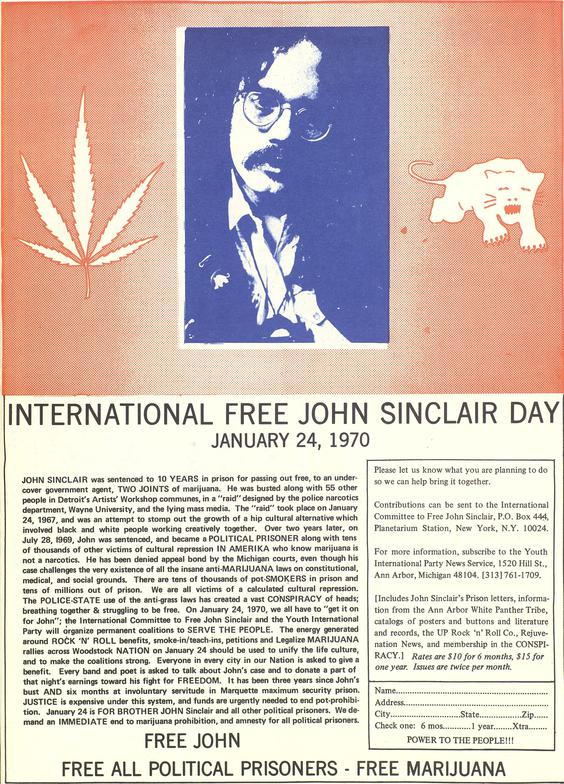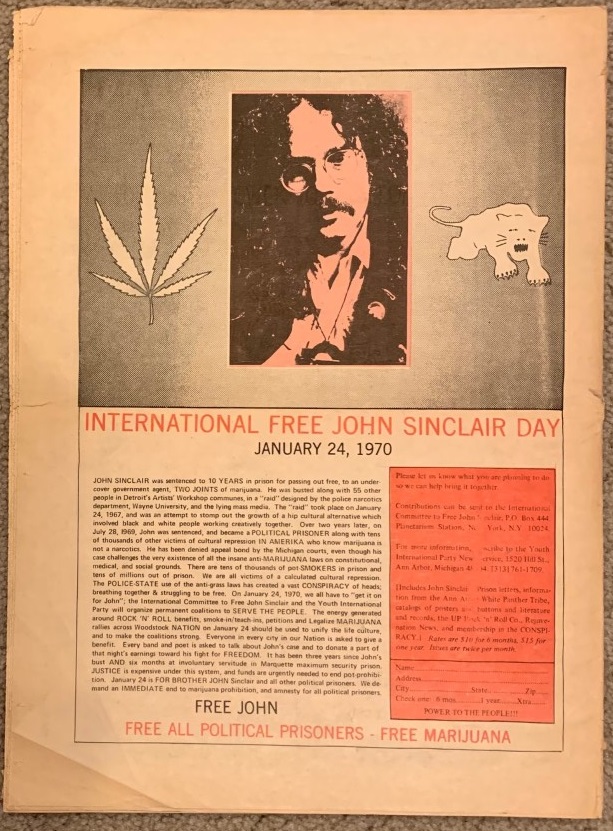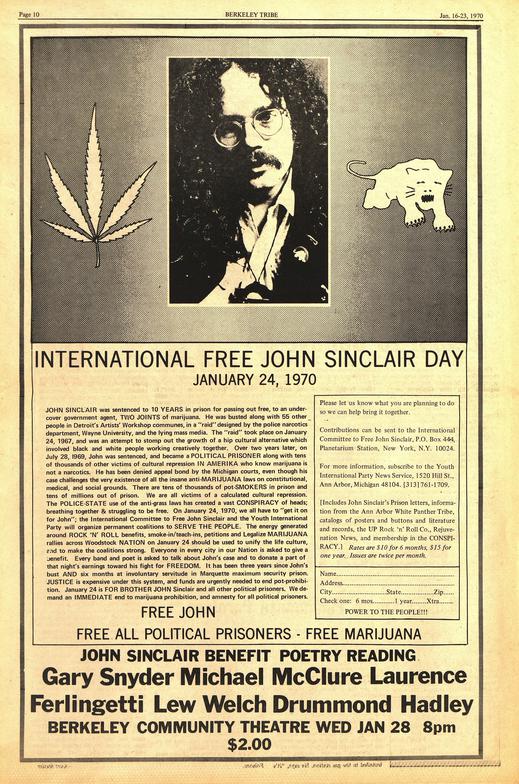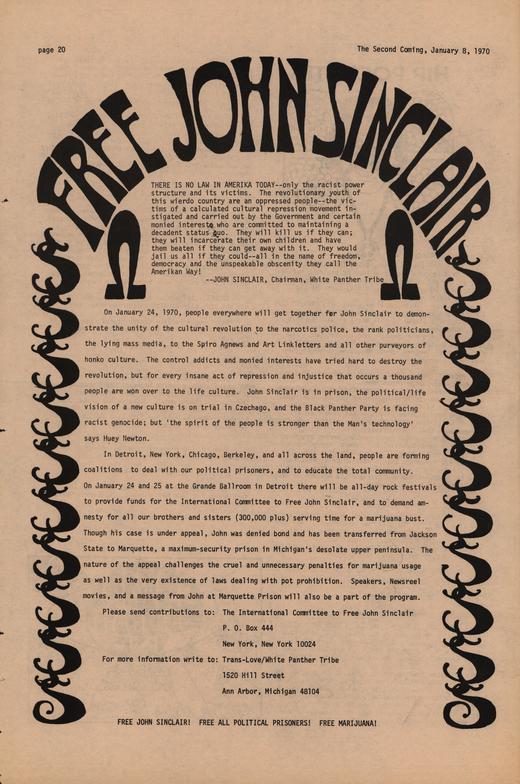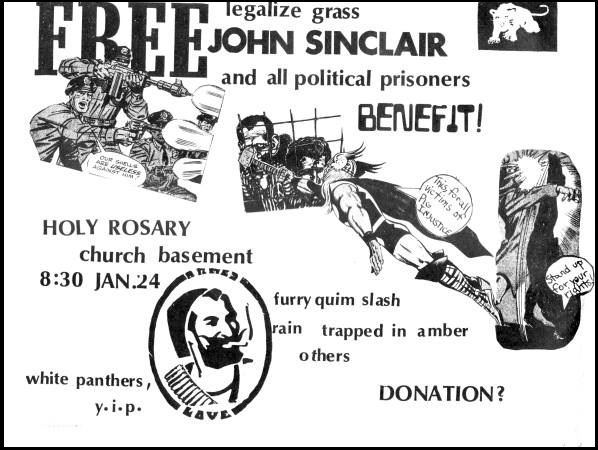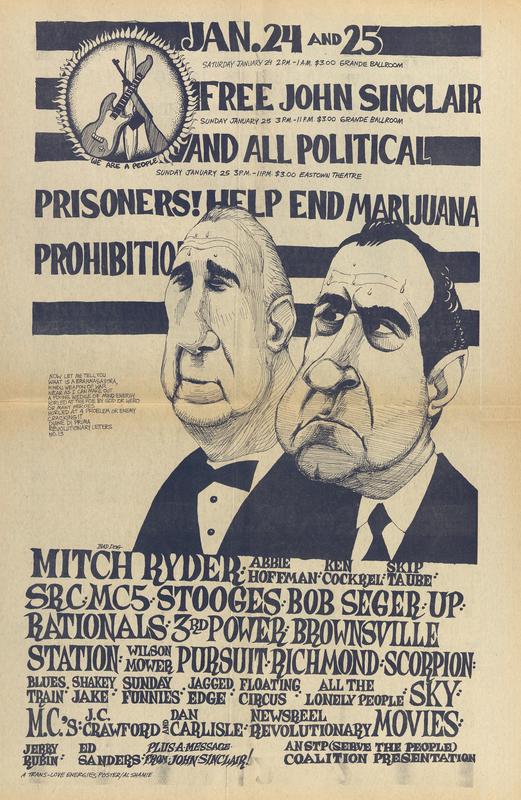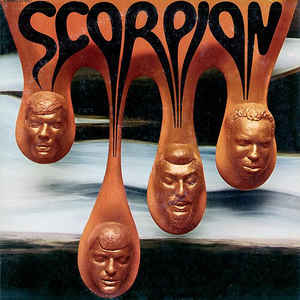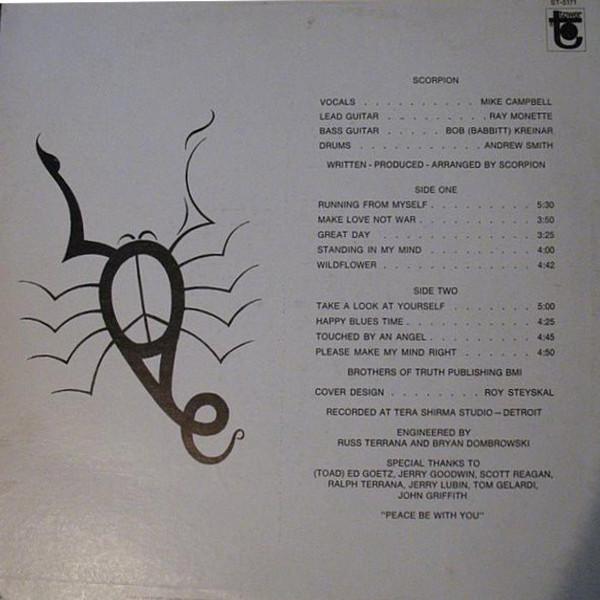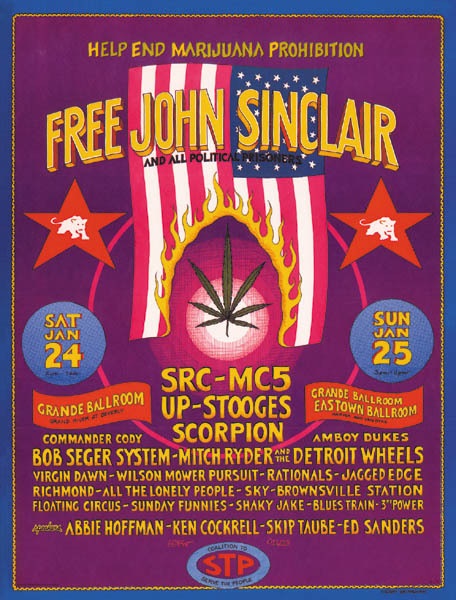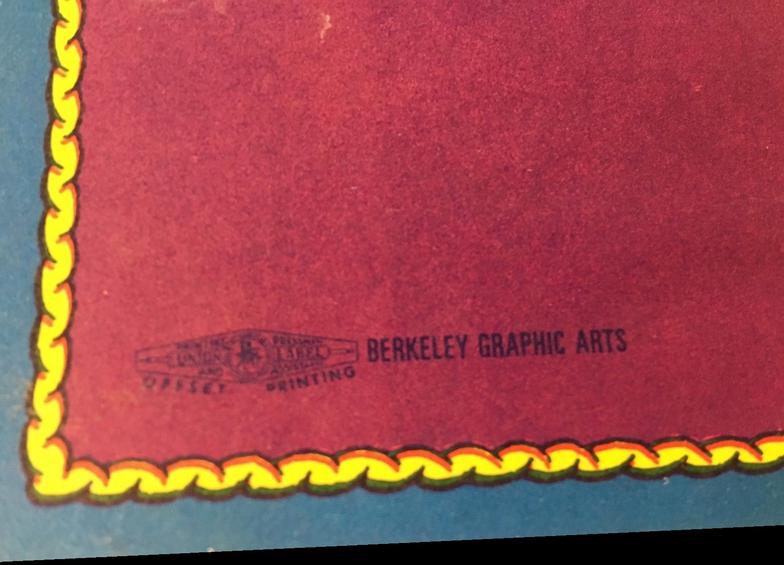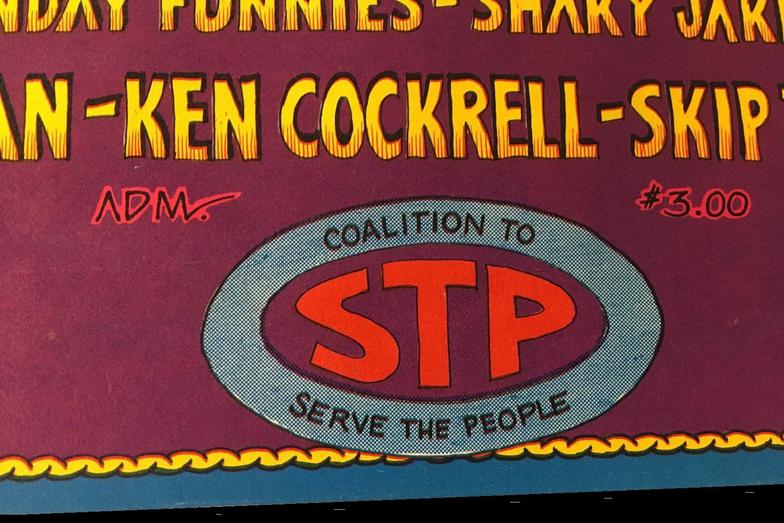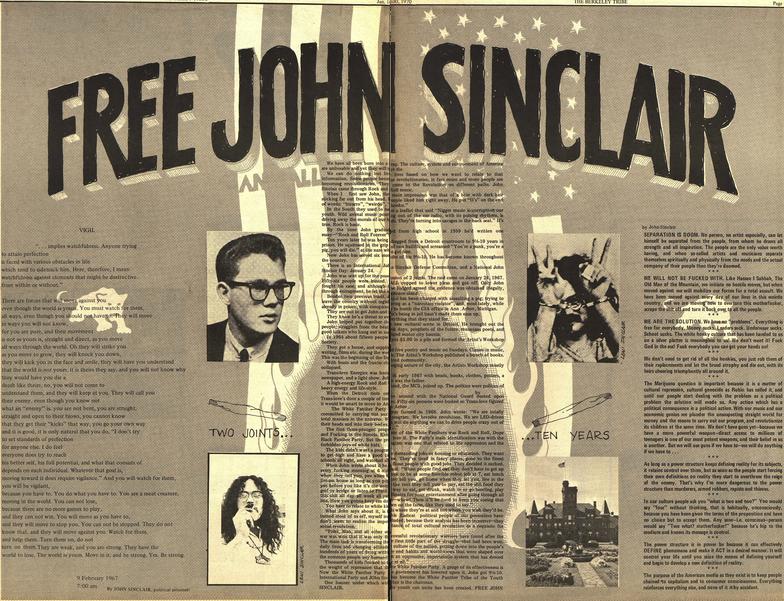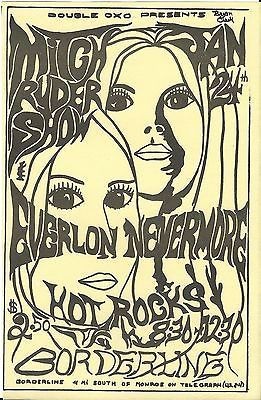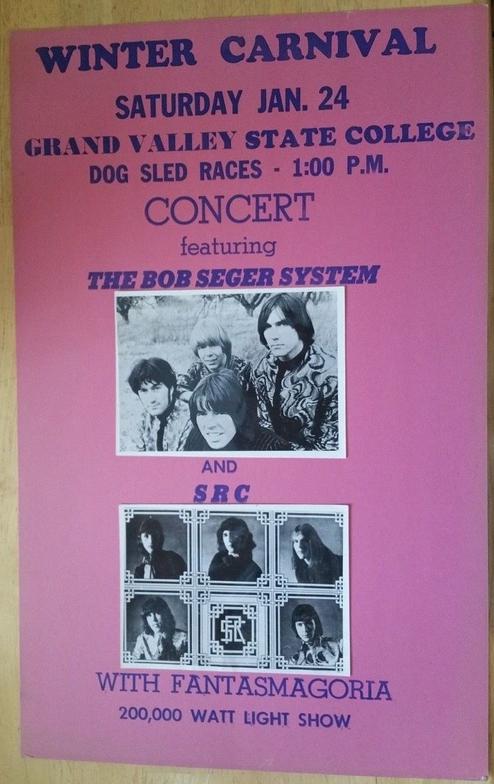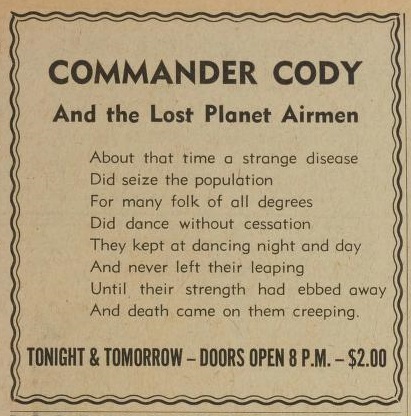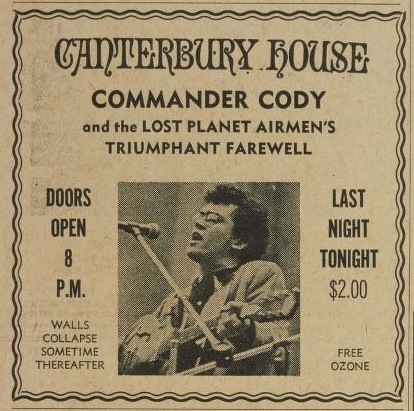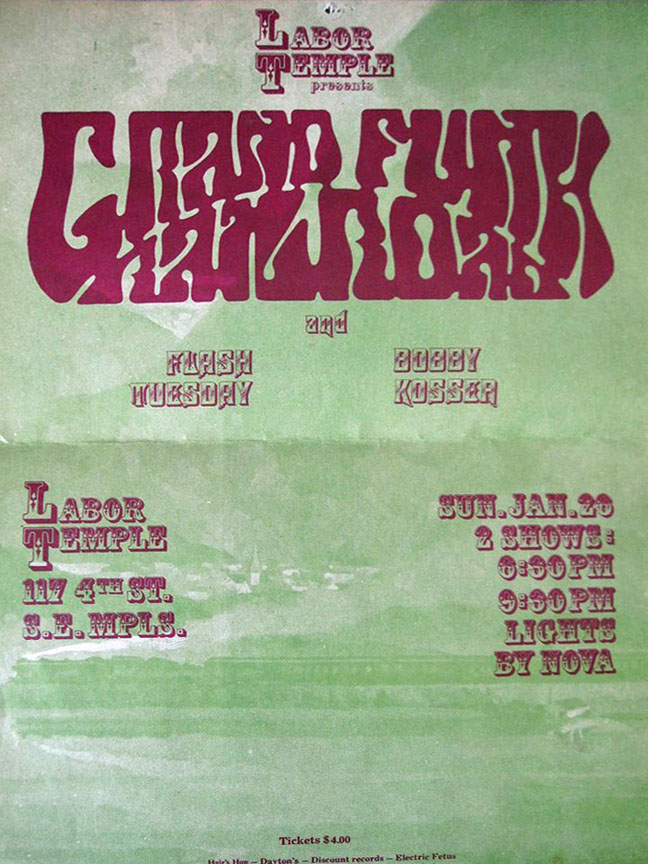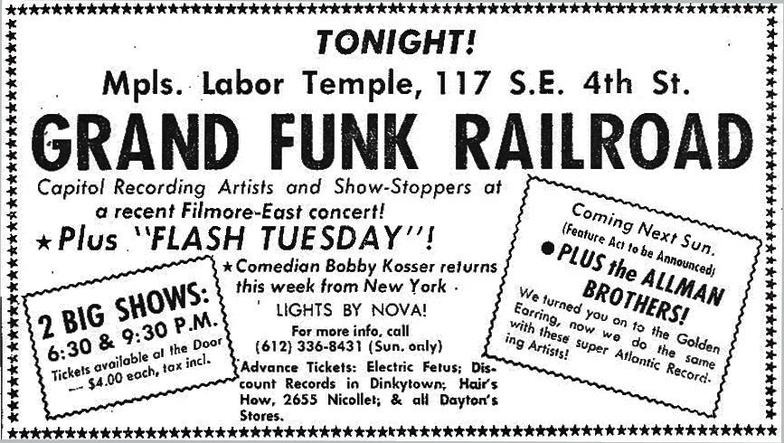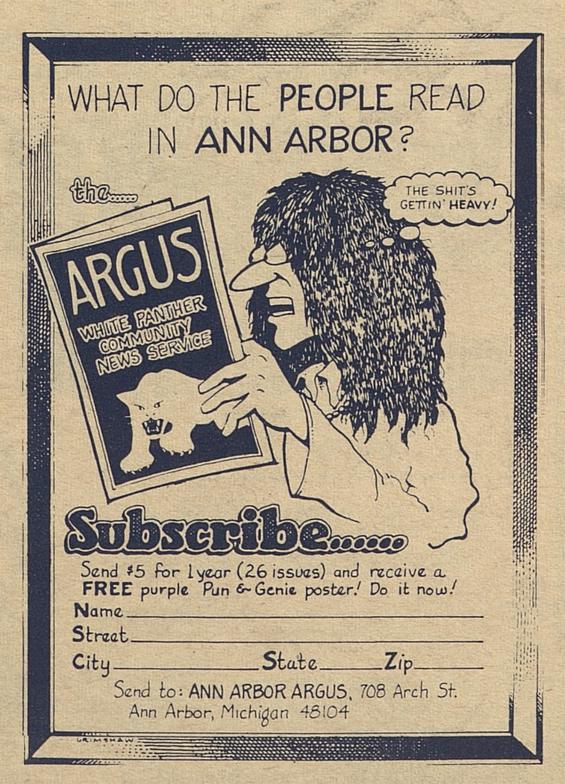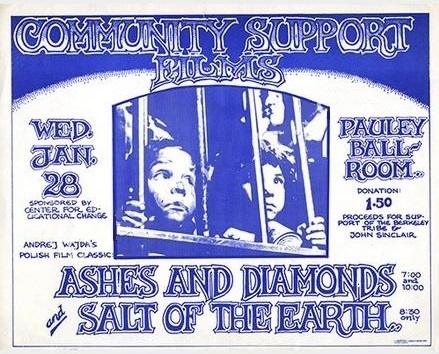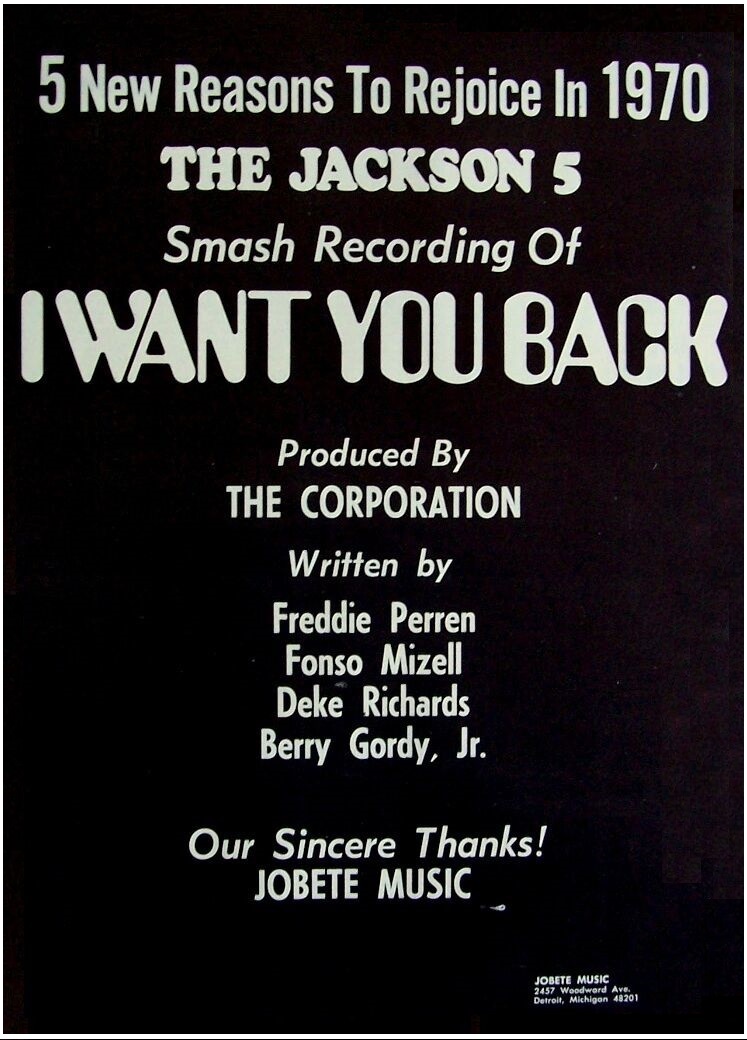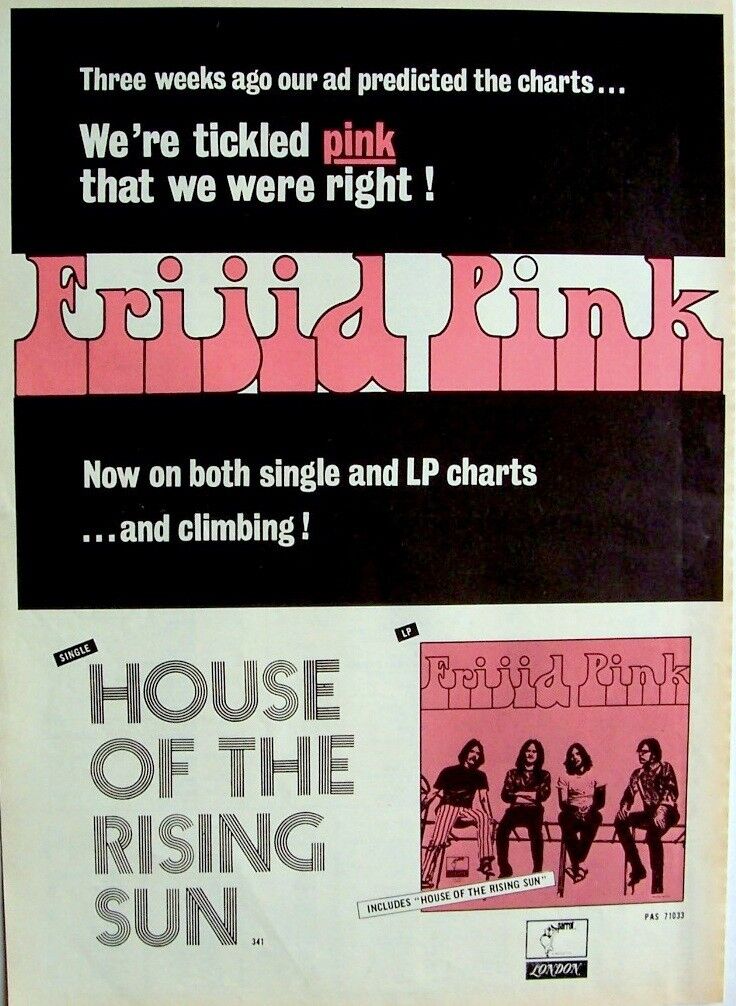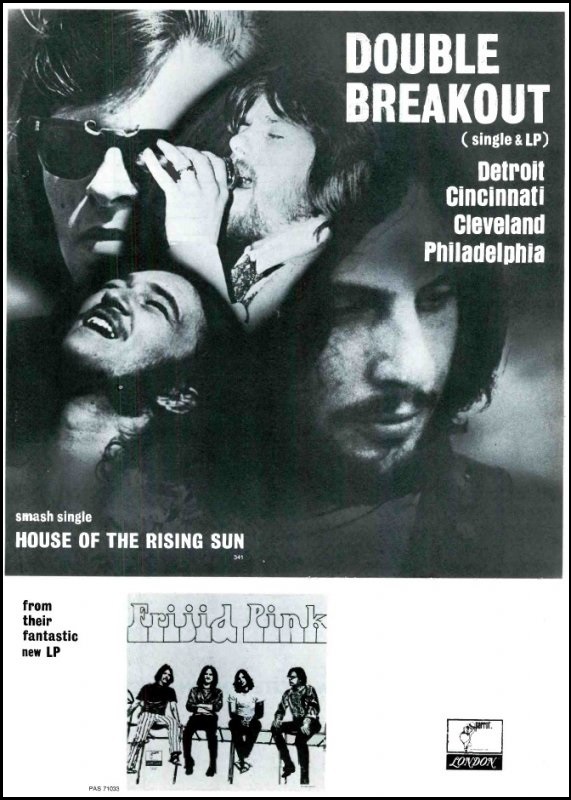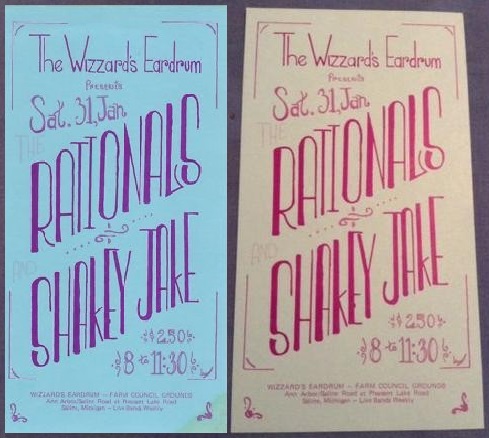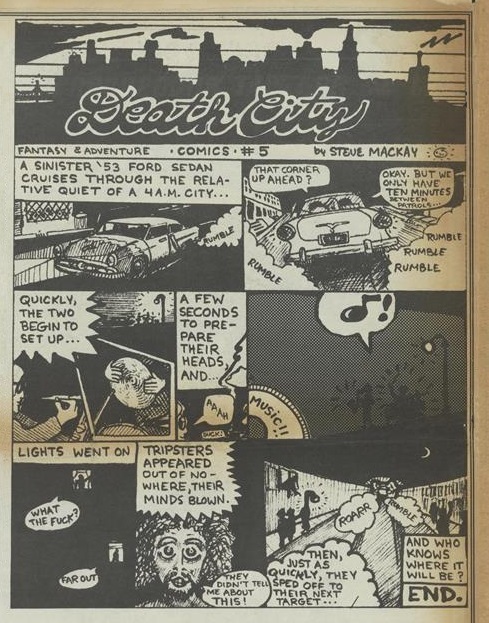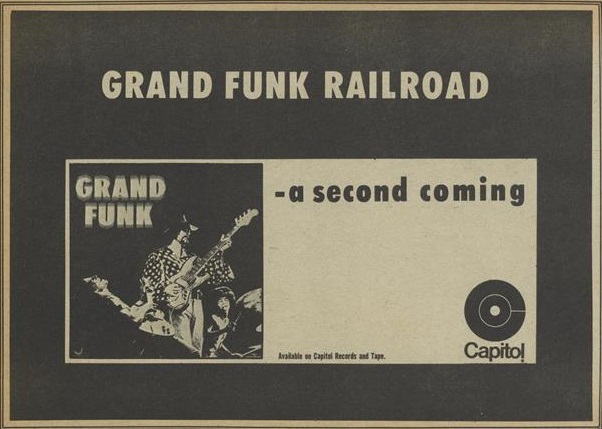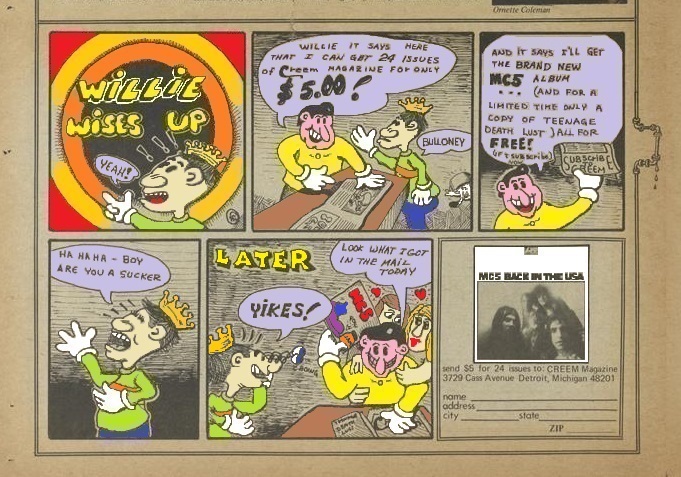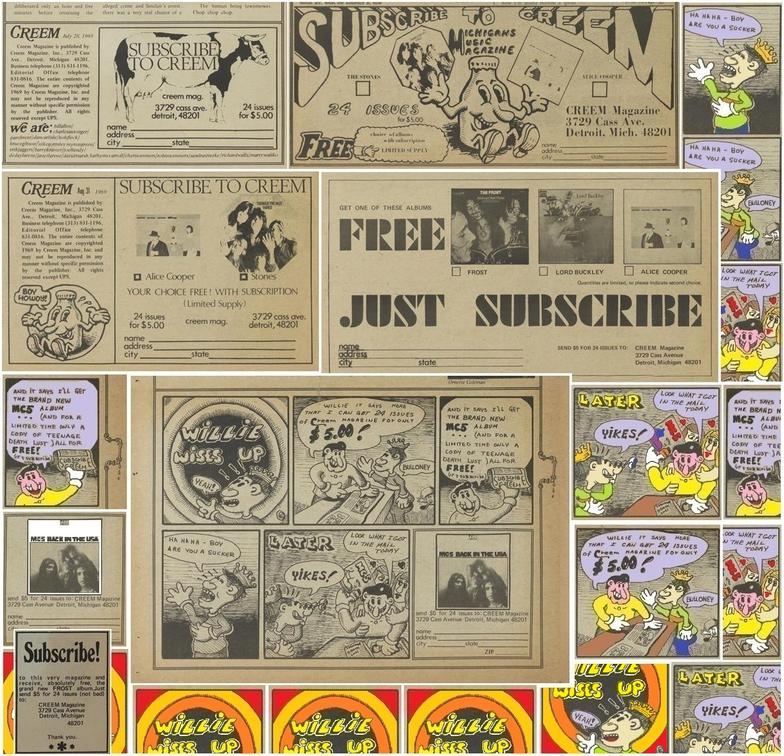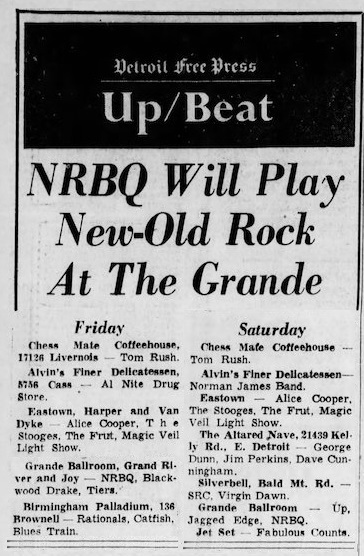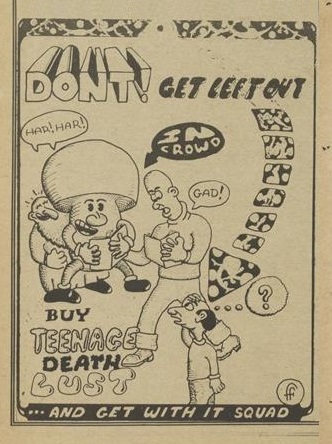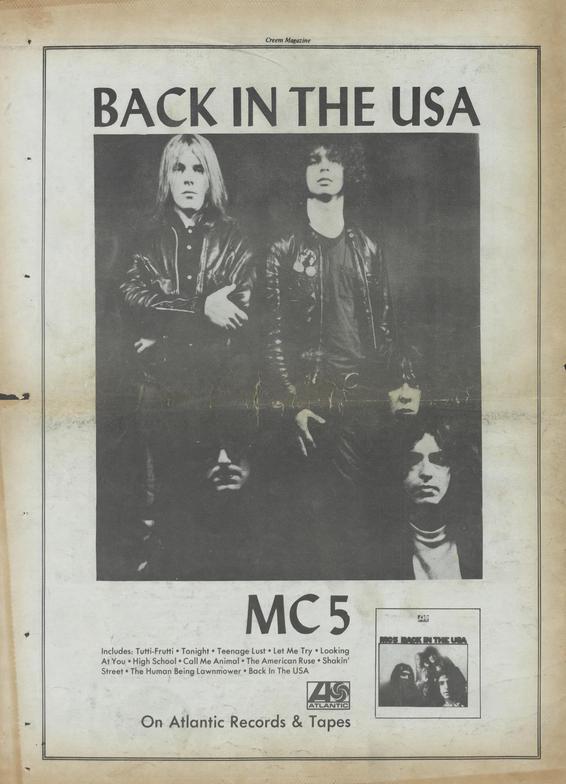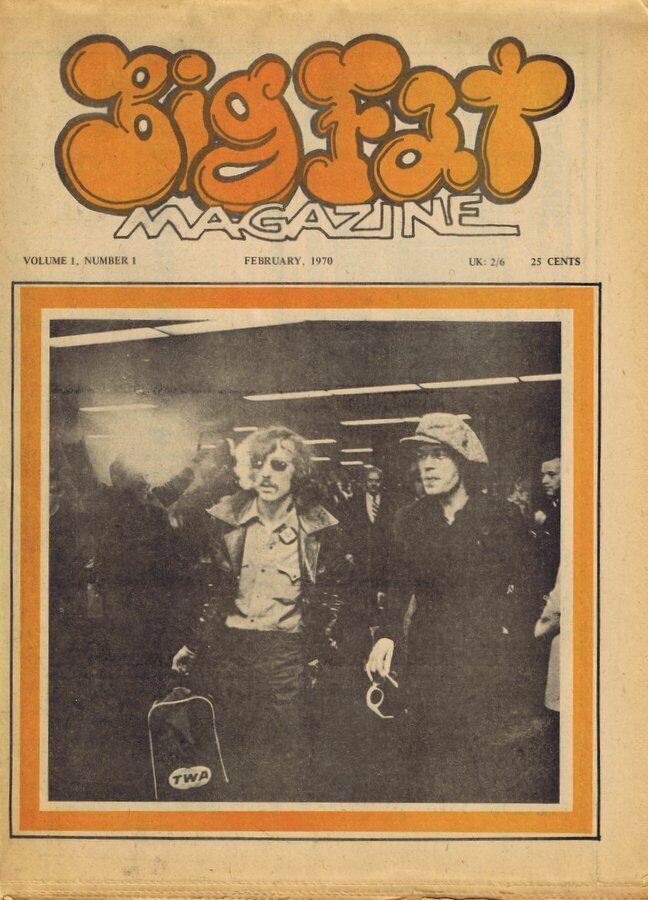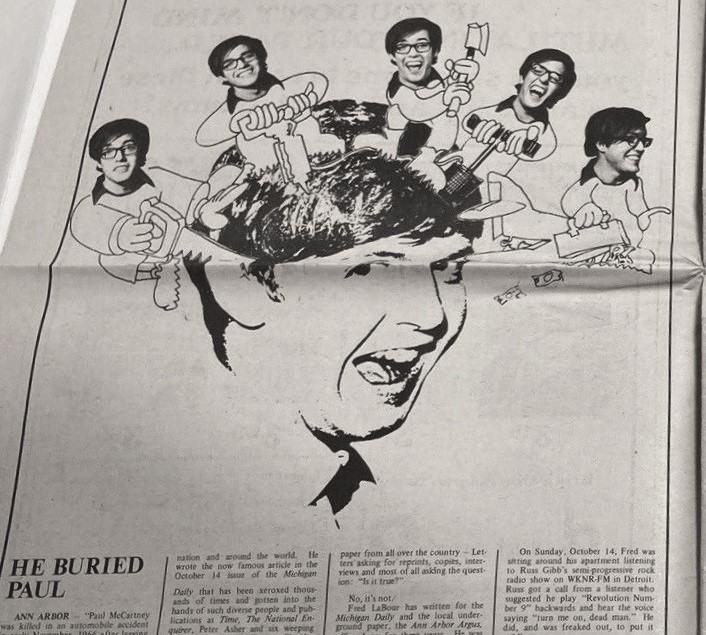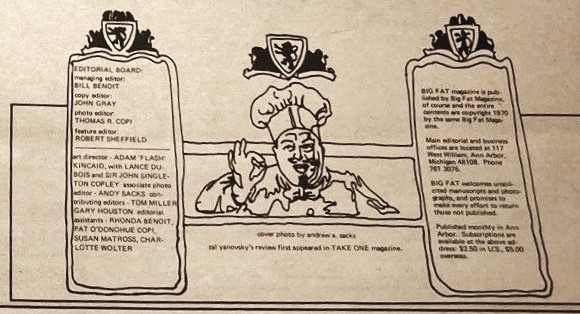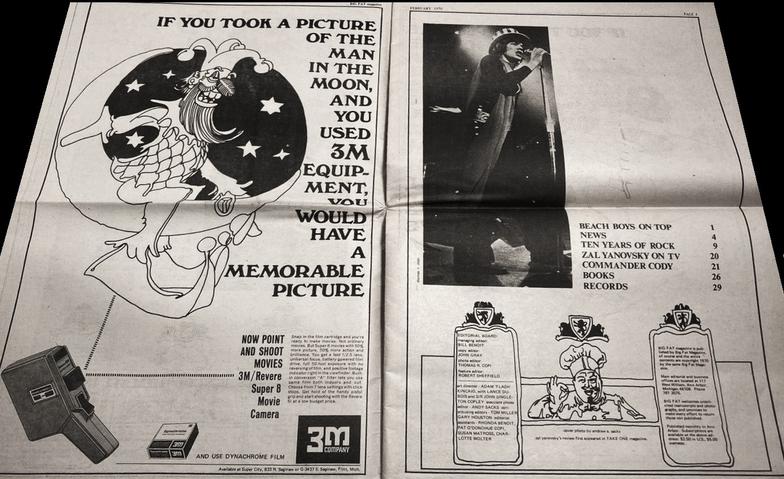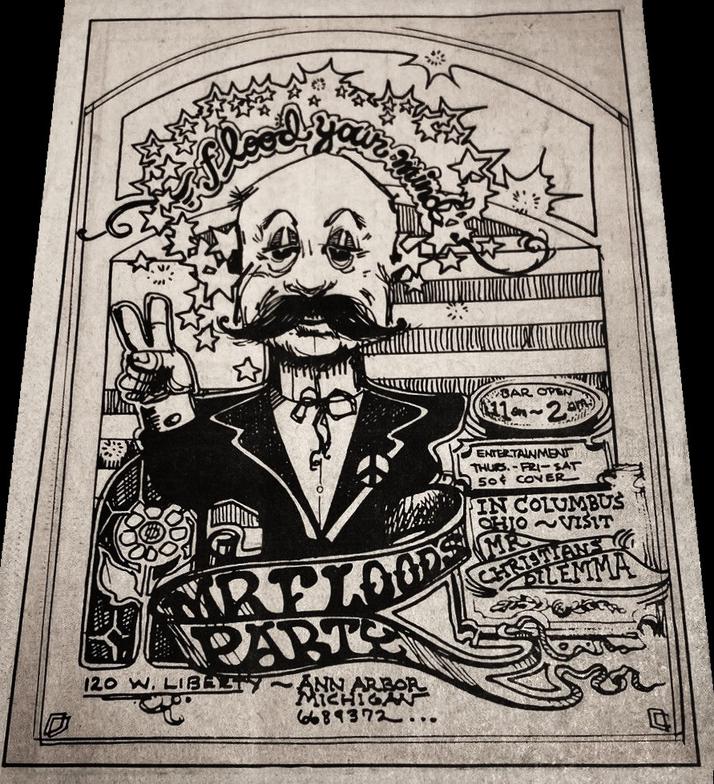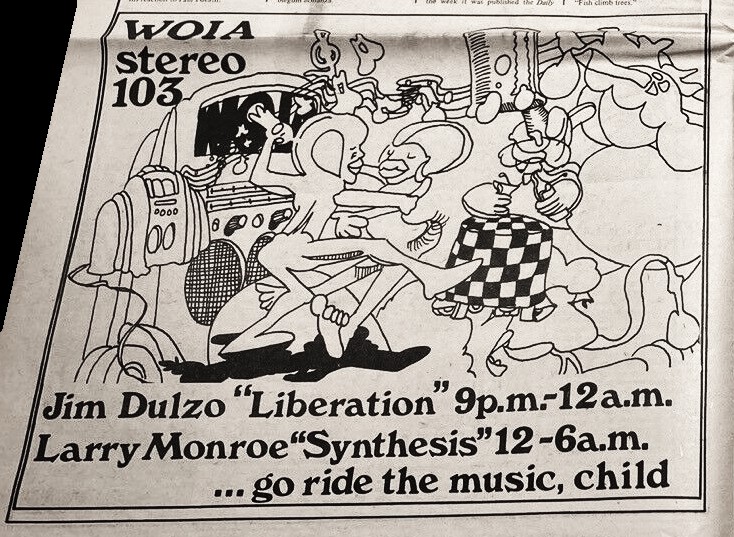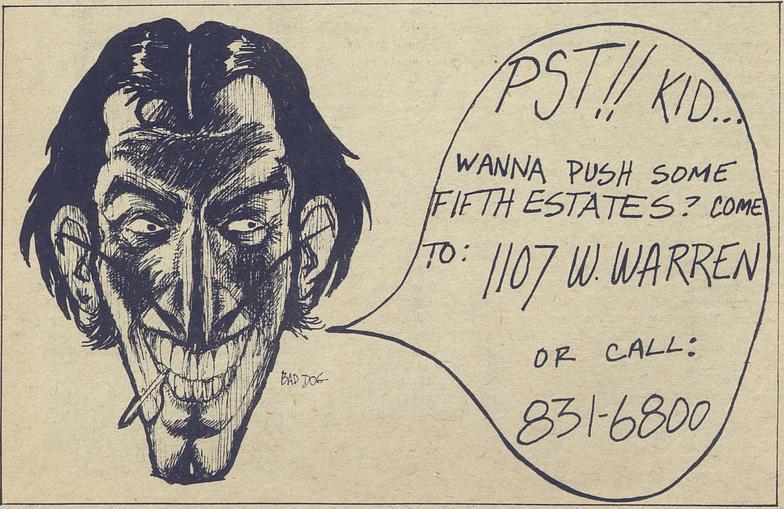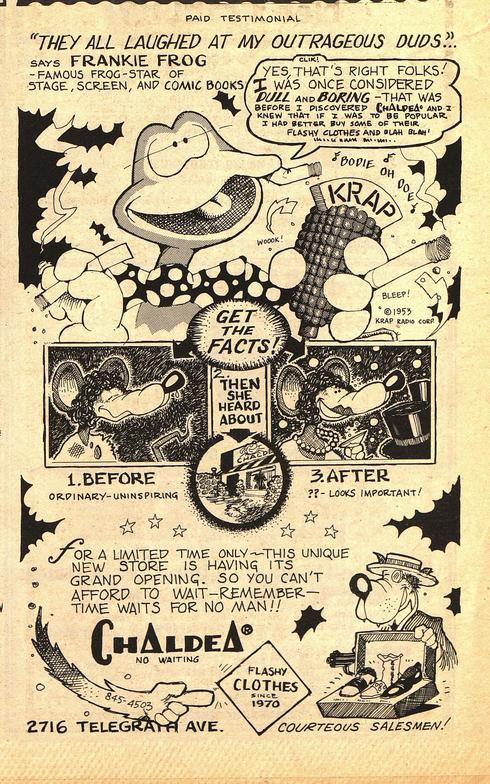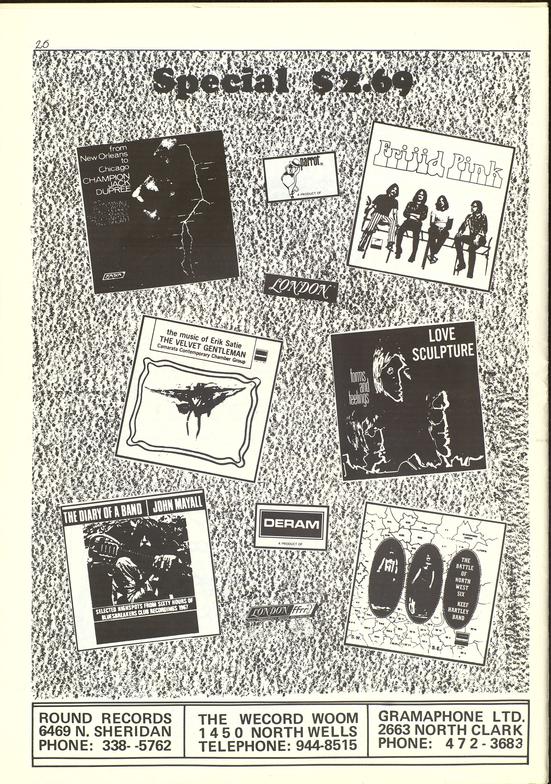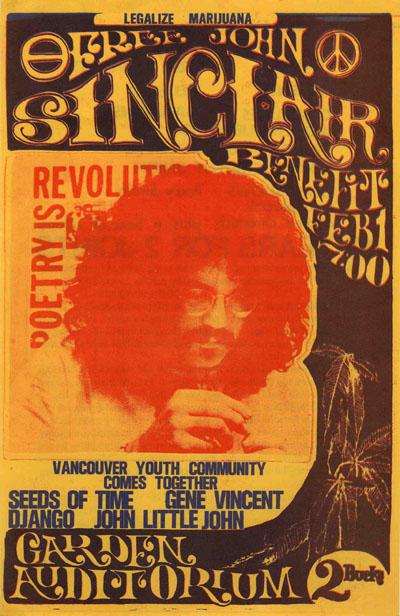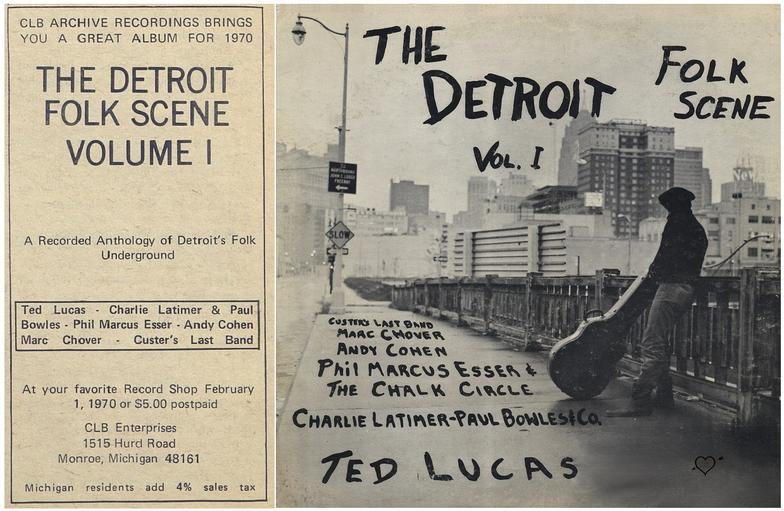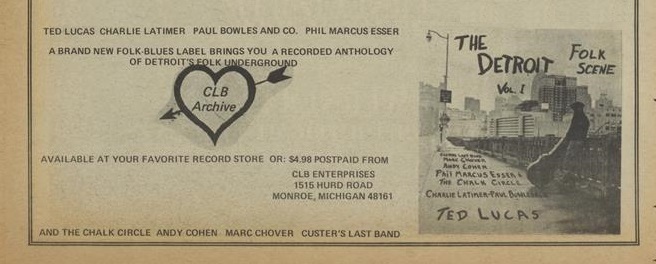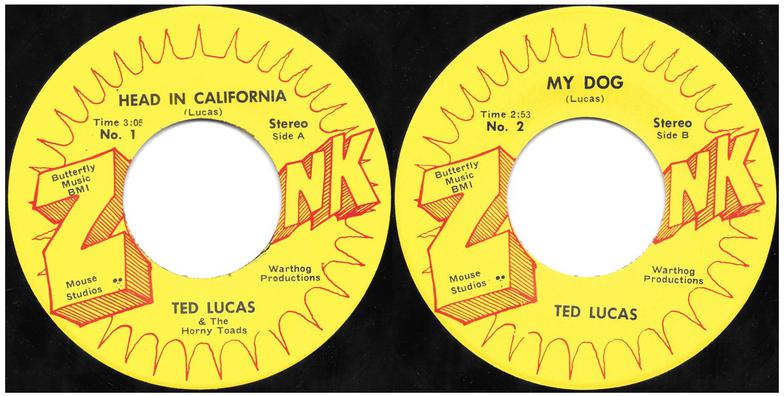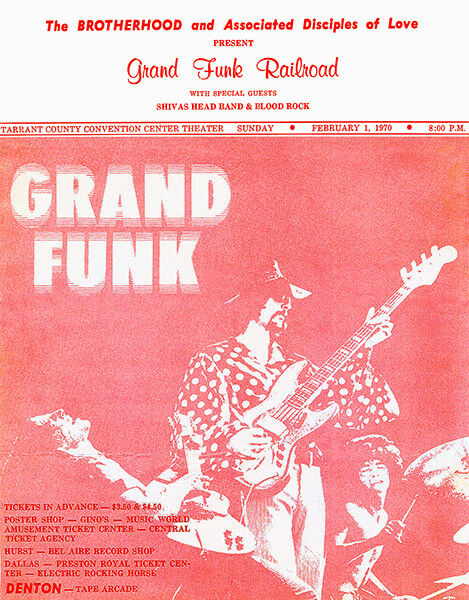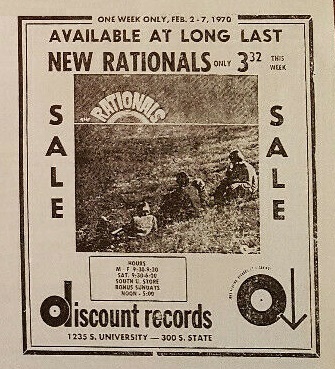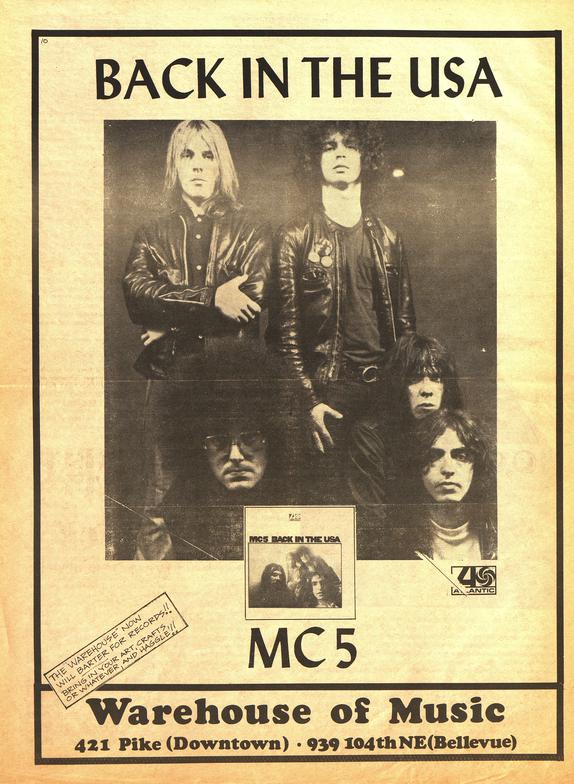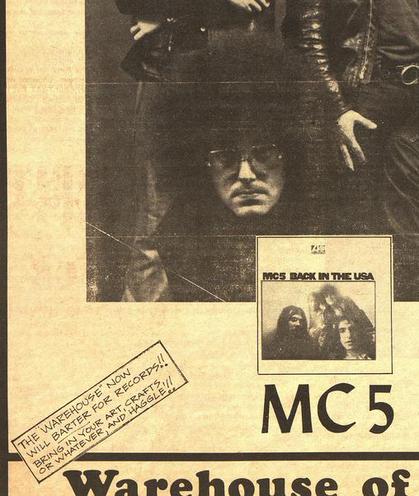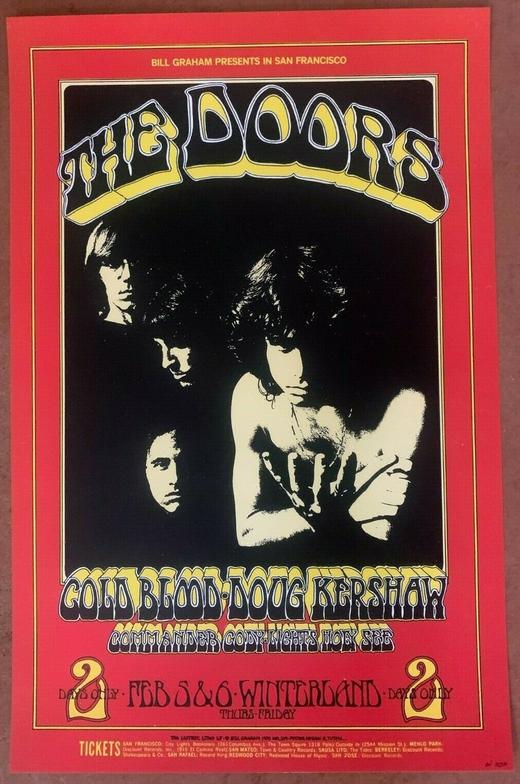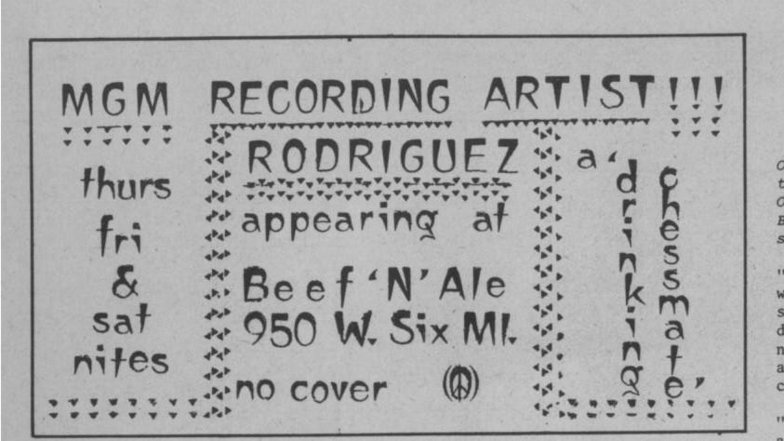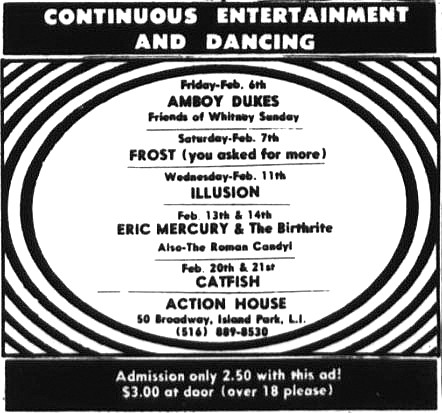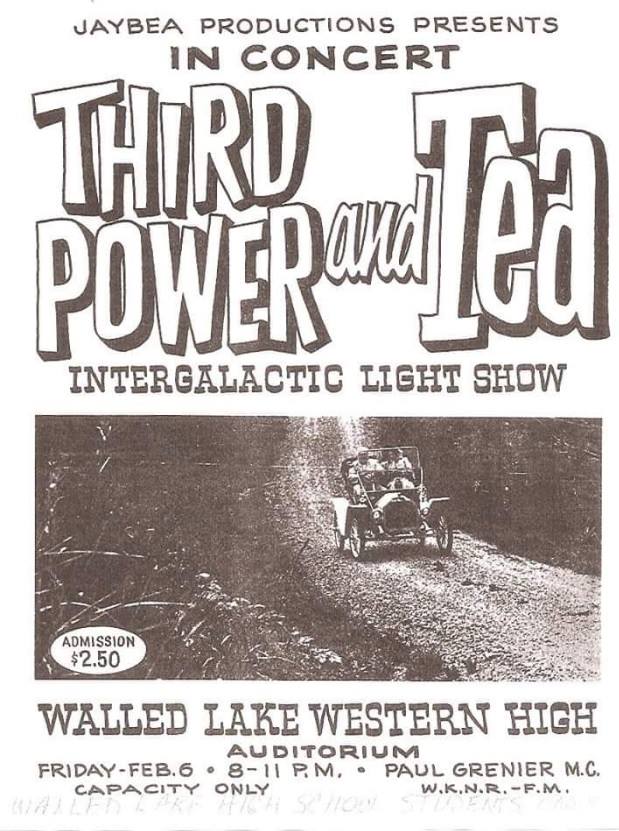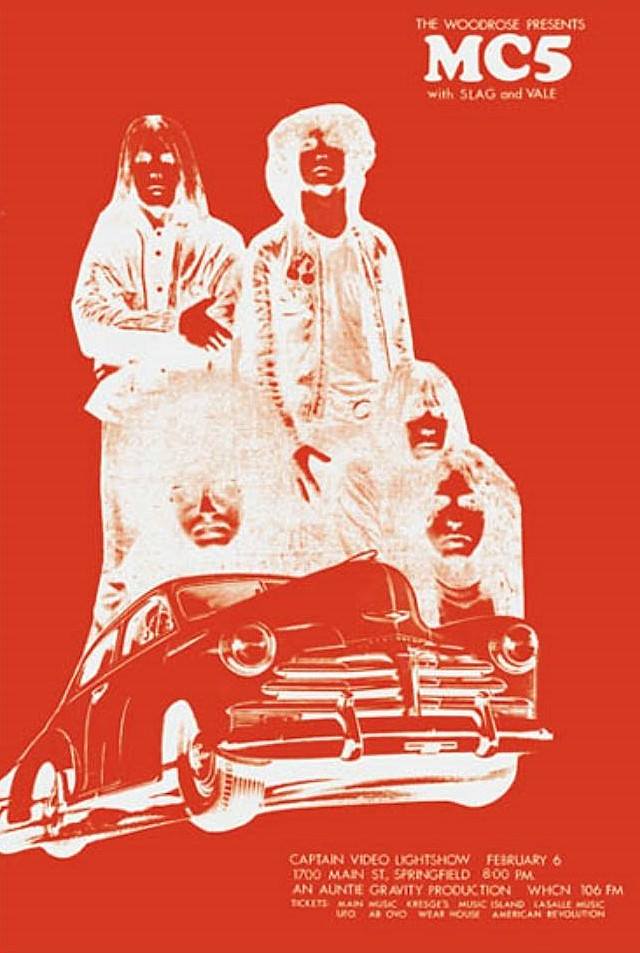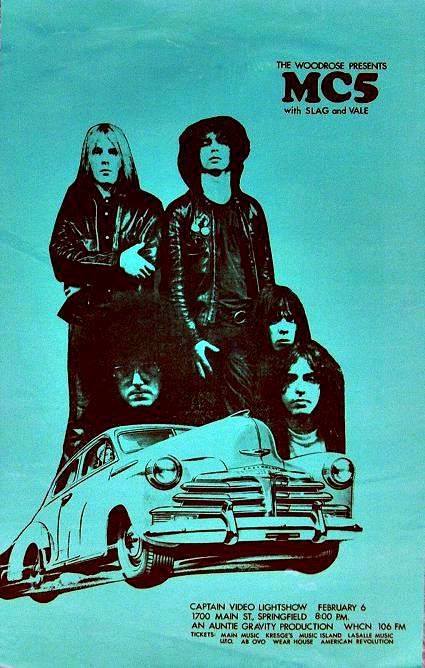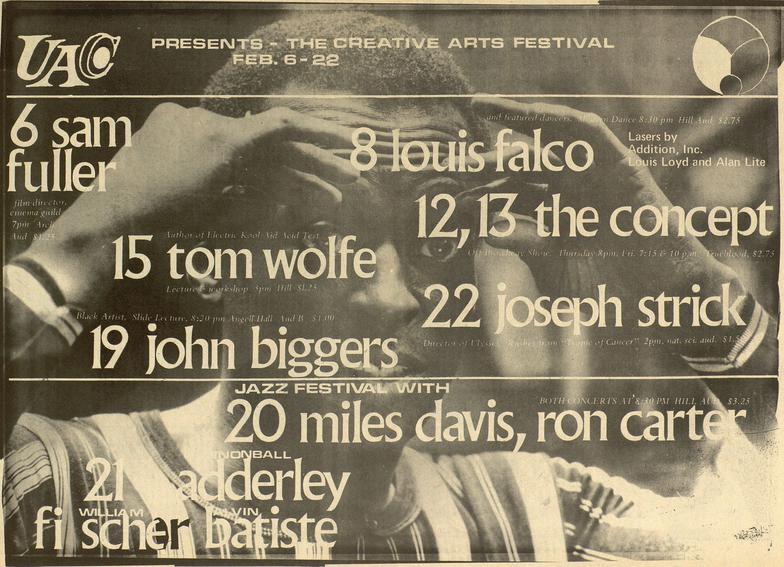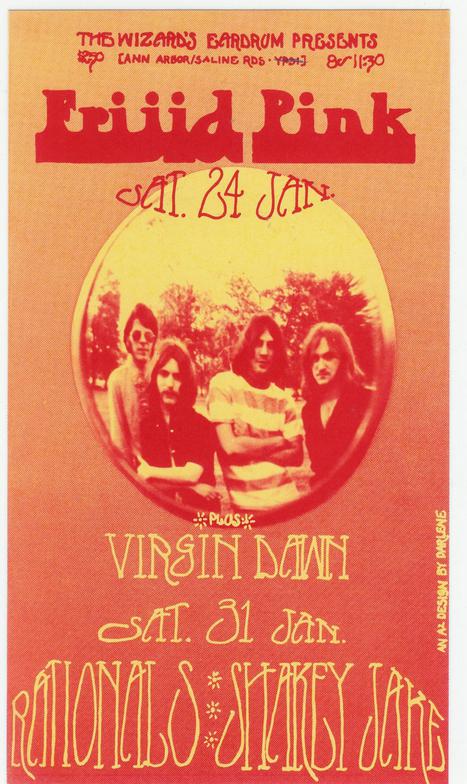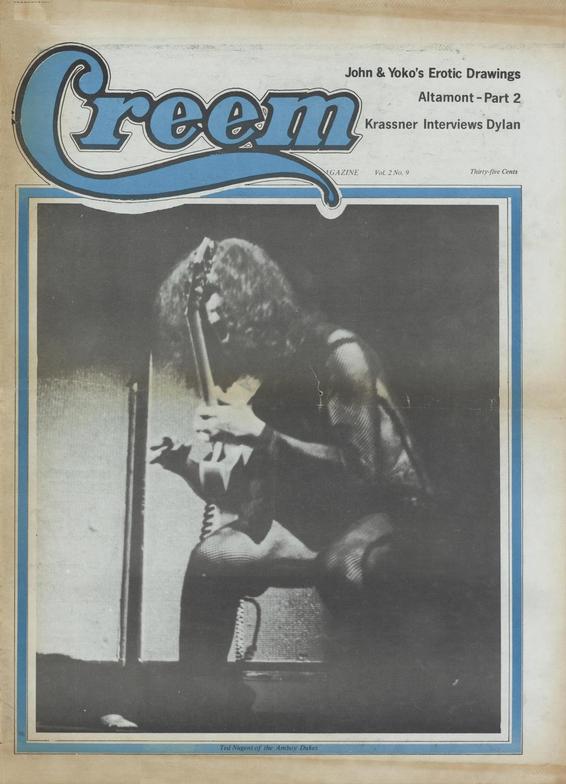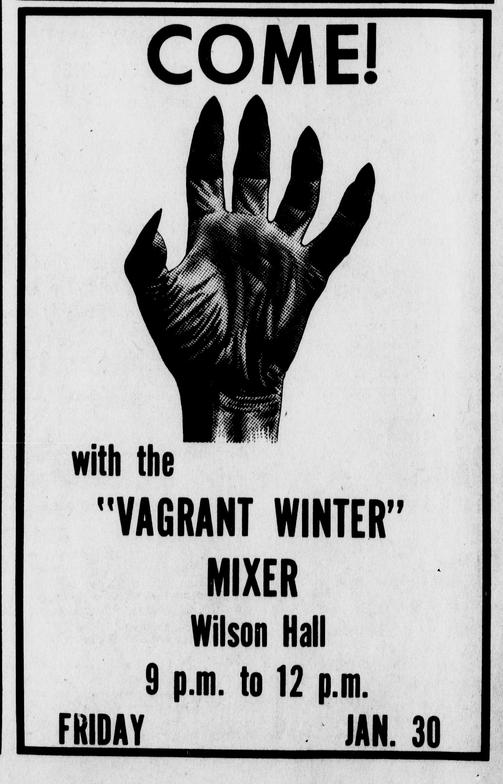Splatt Gallery
Double click here to add text.
Splatt Gallery's History of Michigan Concert Posters
Volume Six - 1970 - Page Two
Poster in postcard form by Darlene Pond, for Grand Funk Railroad at the Upstairs Ballroom in Lima, Ohio, January 24, 1970. Eleven days earlier, on January 13, GFR played at the Crazy Horse Saloon in Kalamazoo, Michigan, which would be their only Michigan appearance for the entire year (until December 29 at a Saginaw pop festival).
***********************************************************
There was also a full-size 14 x 20 poster for this show.
Through the Underground Press Syndicate, which linked hundreds of underground newspapers across the country, the plans for a “Free John Sinclair Day” in Detroit were expanded to include simultaneous events in other cities. The date of January 24, 1970 was selected as it marked the six-month anniversary from the day that Sinclair was hauled off to prison.
Shown above are full-page ads from the Chicago Seed, the Ann Arbor Argus, and the Berkeley Tribe newspapers.
A full page for the Free John Sinclair Day on January 24, 1970 in the Second Coming newspaper in Ypsilanti, Michigan.
Here is another one of the events that was planned to coincide with the “Free John Sinclair Day” activities in Detroit, January 24, 1970. This one was in Milwaukee, Wisconsin.
The coolest poster that came out of the underground press for the “Free John Sinclair Day” was this one by Al Shamie (Bad Dog) in The Fifth Estate newspaper in Detroit.
And the best one, of course, the classic by Gary Grimshaw, his first poster for the Grande Ballroom in eight months, for the nation-wide Free John Sinclair Day on January 24-25, 1970. Grimshaw was finally able to use the artwork he had originally planned as the cover to the first MC5 album, rejected because of objections to the artwork of a burning American flag, in addition to the marijuana leaf.
It was Grimshaw’s 62nd Grande Ballroom poster, but his first since Sun Ra in May 1969.
The event was planned over two days, with a show at the Grande Ballroom on January 24th, and shows at both the Grande and the Eastown on the 25th. The line-up was a stellar collection of the top Michigan groups, plus some relative newcomers. The line-up at the Grande on the 24th included Blues Train, Floating Circus, Früt, Jagged Edge, Richmond, Shiva, Shakey Jake, Sky, UP, and Virgin Dawn. Neither Abbie Hoffman nor Ed Sanders made it to the shows.
The line-up at the Grande Ballroom on the 25th included the Amboy Dukes, Brownsville Station, Frijid Pink, SRC, the Sun, the Sunday Funnies, and Third Power.
Over at the Eastown, the line-up on the 25th was All The Lonely People, Commander Cody & His Lost Planet Airmen, Mitch Ryder & the “Detroit Wheels”, MC5, Wilson Mower Pursuit, the Rationals, and the Bob Seger System.
Corner of Gary Grishaw’s poster for the “Free John Sinclair Day” poster, showing that he was still in California at the time. The original poster was about 16 x 21 inches in size, a later reprint, without the “Berkeley Graphic Arts” stamp, was smaller, about 13 x 18 inches. The reprint is also more blue than purple.
Another detail from Gary Grishaw’s poster for the “Free John Sinclair Day” poster, showing the nice texture of the light blue circle and introducing the new STP coalition.
The Free John Sinclair rally weekend is also one of the only known live appearances by the band Scorpion, a band founded by Ray Monette, before he joined Rare Earth as guitarist in 1971.
Bassist Bob Babbitt tells the story of the band in a 2002 blog post:
At a session at Golden World for Ed Wingate, I noticed two faces watching me from inside the control room. After the session they approached me and introduced themselves, Mike Campbell and Ray Monette.
Both of them sang and wrote their own songs and at that time I think they were signed with Jack Ashford as artist, Ray was also a guitar player and Mike was the main singer. I took a liking to them and the three of us got together to just play some music, Mike also played congo’s and harmonica.
We started to write some songs that were recorded by some of the local artists, by then the friendship was growing, at some point they were not signed with Jack anymore and we then decided to do a self contained group thing, with not only the concept of the R&B feel, which Ray and Mike both had a handle on, ( the first session that i did with Ray was “Cool Jerk”) but also tunes with a hard edge funk soul rock, a Beatles flavor, pop sounding, Sly & the Family Stone, Jimi Hendrix, and Cream mixed together, we then asked Andrew Smith to play with us and what he contributed took it yet to another level. By the way we started this before the coming of Sly and Hendrix.
We made demos, signed a deal with Capitol, then after we recorded the album at Terra Shirma studio under the name “Scorpion” Capitol refused it and we hit the streets and pounded the doors in Detroit, LA, and New York with no luck with the exception of Arman Baladian (Westbound Records) but we turned him down thinking his label could not do the job. Then someone from Tower Records (Pink Floyd's label at that time) heard the album and we made a deal with them. Capitol, who refused it originally, owned Tower Records. And even though there was heavy promotion started before the release of the album, Capitol fired everyone that was behind us at the label and defunct the Tower Record label. Another album I wish I could locate.
After that the group signed with Motown and the first thing that happened was that the Rare Earth group offered Ray the guitar spot, we then recorded some things with Paul Warren playing guitar, but anything we had recorded for the Scorpion group never was finished or released, shortly after that the Detroit Motown days were history.
Mike made the move to Motown LA where he got into acting. As an actor he appeared in quite a few movies and commercials but decided it was not for him, he now has 4 kids and lives in Wyoming or Montana, i think he is selling cars? And Ray lives in Detroit and is still with the Rare Earth group.
Scorpion – Scorpion (album) (1969)
https://www.youtube.com/watch?v=wQbq5gtZb3Y
Gary Grimshaw’s poster art was used as the background for this centerfold in the January 14, 1970 issue of The Berkeley Tribe newspaper
A third poster by Bryan Clark (sp?) for The Borderline in Monroe, Michigan, January 24, 1970. After appearing at this show, Mitch Ryder played the Sunday night show at the Eastown Theater as part of the John Sinclair benefit.
The band Everlon Nevermore was formed by Alan Nathanson and Neil Faigenbaum of Oak Park, Michigan, following the break-up of their band, The Trademarks. Everlon Nevermore recorded one single, called “Ah Music” which we can’t find on YouTube, but if it’s as good as this song by the Trademarks, from 1967, we’d like to hear it. Alan Nathanson is on FB, so maybe we will.
The Trademarks – If I was Gone (1967)
https://www.youtube.com/watch?v=rLrntNqaKEI
Winter Carnival at Grand Valley State College, west of Grand Rapids, Michigan on January 24, 1970. The next night, both groups took part in the John Sinclair Benefit, with SRC going to the Grande Ballroom, and Bob Seger over at the Eastown Theater.
Here is an absolutely killer video of the Bob Seger System that was broadcast in 1970 on Barry Richard’s “Turn On” show on WDCA-TV broadcast from Washington DC.
Bob Seger System – Ramblin’ Gamblin’ Man WDCA-TV (1970)
https://www.youtube.com/watch?v=sFlI4ceQOiU
Poster by Darlene Pond for Frijid Pink and Virgin Dawn at the Wizard’s Eardrum in Ann Arbor (not Ypsilanti), Michigan, January 24, 1970, and the following week with the Rationals and Shakey Jake.
Another strange ad for Commander Cody & his Lost Planet Airmen at the Canterbury House in Ann Arbor, Michigan on January 24-25, 1970.
An ad for Commander Cody & his Lost Planet Airmen at the Canterbury House in Ann Arbor, Michigan on January 25, 1970, the band’s “triumphant farewell” before they relocated to Berkeley, California. Earlier that afternoon, they had also performed as part of the “Free John Sinclair Benefit” at the Eastown Theater in Detroit.
Poster by Juryj (“George”) Ostroushko for Grand Funk Railroad at the Labor Temple in Minneapolis, Minnesota on January 25, 1970.
An ad for Grand Funk Railroad at the Labor Temple in Minneapolis, Minnesota on January 25, 1970.
Gary Grimshaw ad for the Ann Arbor Argus newspaper as found in the January 26, 1970 issue of the Fifth Estate newspaper in Detroit, Michigan.
The White Panthers in Berkeley, California tried to book the Berkeley Community Theater to participate in the Free John Sinclair Day festivities, but Bill Graham already had the venue booked for a Laura Nyro concert. They asked Graham if he would reschedule, or at least donate the proceeds from the night to the cause, but both requests were predictably rebuffed.
The nearest they could book the facility was the following Wednesday, January 28, 1970.
The MC5 had cut their four-night stand at Ungano’s in New York City short by a night so that they could fly back to Detroit to take part in the John Sinclair benefit, January 24-25. CREEM Magazine reported that “there was some hostility and bitterness apparent between the audience and the Five due to their split from the Sinclair/Trans-Love organization”, but that they received a standing ovation. The article also mentions that Mitch Ryder and the Detroit Wheels also received a standing ovation at the Sunday show at the Eastown Theater.
The MC5 immediately returned to the East Coast for three nights at the Boston Tea Party, January 29-31, 1970. Poster by the Tea Party’s Bob Driscoll. Strange billing, opening for the gospel soul group, the Staple Singers.
A full-page Jobete Music ad, the publishing arm of Motown Records, celebrating the single “I Want You Back” by the Jackson 5, which hit #1 on the Billboard Hot 100 singles chart on January 31, 1970.
It was the first Jackson 5 single released by Motown, and it was the first song written and produced by The Corporation, a team comprised of Berry Gordy, Freddie Perren, Alphonso Mizell, and Deke Richards.
It also became the first of four Jackson 5 singles, released in a row, to reach #1, with "ABC", "The Love You Save", and "I'll Be There", all following in 1970.
Full-page ad from the January 31, 1970 issue of Billboard magazine for Frijid Pink’s self-titled debut album. The lead single, “House of the Rising Sun” entered the WKNR hit parade at number 29 on January 6, 1970 and was certified as a gold record for one million units in sales on May 30, 1970.
Frijid Pink – House of the Rising Sun (1970)
https://www.youtube.com/watch?v=t40INnb6DnY
Poster/handbill for the January 31, 1970 show at Wizard’s Eardrum with the Rationals and Shakey Jake, also by Darlene Pond.
Ted Nugent of the Amboy Dukes on the cover of the February 1970 issue of CREEM Magazine, Volume 2, Number 9. (There was no January issue.)
The fifth, and final, installment of the “Death City” comic by Steve Mackay, in the February 1970 issue of CREEM magazine.
An ad for the second album by Grand Funk Railroad , in the February 1970 issue of CREEM magazine.
A subscription form (color added) from the February 1970 issue of CREEM magazine, illustrated by “FF”, and offering the second album by the MC5 and a copy of “Teenage Death Lust” (also by “FF”) as premiums. It is not too far fetched to assume that “FF” was staff member Fatmouth Freek.
It wasn’t until the eighth issue (third issue with the re-vamped staff) in August 1969 that CREEM magazine offered subscriptions, an ambitious 24 issues for five dollars. The next issue included the very first premium to subscribers, a choice of either the debut album by Alice Cooper or the Rolling Stones’ second greatest hits compilation with the octagon cover “Through the Past, Darkly (Big Hits Vol. 2)”.
Two issues later, the Stones’ albums had all been snatched up, the Alice Cooper album was still available, in a three-way choice with albums by Frost and Lord Buckley. A barely noticeable small ad “Subscribe!” appeared in the final issue of 1969, offering only the Frost album.
The subscription ad in the February 1970 issue featured a cartoon by “FF”, which is not too farfetched to assume was staff member Fatmouth Freek. The premium album was the MC5’s second album “Back In The USA”. An extra bonus was a copy of “Teenage Death Lust” comic, also by “FF”.
A newspaper events column with two shows at the Grande Ballroom, January 30-31, 1970, with NRBQ headlining two nights, with support by Blackwood Drake with Tiers, and UP with Jagged Edge. Alice Cooper, the Stooges and Frut were at the Eastown, the Rationals, Catfish and Blues Train were at the Birmingham Palladium, SRC and Virgin Dawn at the Silverbell, the Fabulous Counts at Jet Set, Tom Rush at the Chess Mate, and something called "Al Nite Drug Store" at Alvin's.
An ad for the “Teenage Death Lust” comic in the February 1970 issue of CREEM magazine.
A full-page Atlantic Records ad for the second album by the MC5 on the back cover of the February 1970 issue of CREEM magazine.
Issue #1 of Big Fat magazine was published in February 1970. The short-live music newspaper was published and distributed in Ann Arbor, Michigan. The editor was Robert Sheffield, and the picture editor was photographer Tom Copi, who had photographed Ann Arbor concerts for the Michigan Daily newspaper and was the staff photographer for the 1969 and 1970 Ann Arbor Blues Festivals.
Copi later joined the photo staff of the Detroit Free Press newspaper and eventually moved to San Francisco to specialize in photographing jazz musicians. His photos have been used for album covers and he currently has a website here:
https://www.rockpaperphoto.com/browse-by-photographer/thomas-copi
Illustration by an unknown artist for a story in February 1970 Issue #1 of Big Fat magazine in Ann Arbor, Michigan, with the story "He Buried Paul", about Fred LaBour, the University of Michigan student who is credited as being ground zero for the "Paul Is Dead" revelation.
First inside pages of in the February 1970 Issue #1 of Big Fat magazine with ad illustration by John Copley and photo by Tom Copi.
The staff box in the February 1970 Issue #1 of Big Fat magazine in Ann Arbor, listing artist John Copley, one-half of the future Crow Quill along with Zeke Mallory, who at the time is on the staff of the Second Coming newspaper in Ypsilanti.
The back cover of the February 1970 Issue #1 of Big Fat magazine with ad for Mr. Flood’s Party and an inside ad for WOIA radio by John Copley (future Crow Quill).
Al Shamie (Bad Dog) was not listed as part of the staff of The Fifth Estate newspaper, but his art was being used fairly extensively in the publication, even in the paper’s own sales pitch.
An ad for the Chaldea clothing store in Berkeley, California by Carl Lundgren in the January 30, 1970 issue of the Berkeley Tribe newspaper.
A full-page record stores ad in the February 1, 1970 issue of the Chicago Seed newspaper with the debut album by Frijid Pink.
A poster for a John Sinclair benefit show in Vancouver, Canada, February 1, 1970, one week after the main event in Detroit.
Ted Lucas continued to perform with long-time partner Richard Keelan as The Misty Wizards, while picking up extra income at Motown recording sessions when tracks required the use of exotic instruments such as the sitar. Lucas also contributed a couple of solo tracks to the “Detroit Folk Scene Vol. 1” album, released on February 1, 1970. Ads from the Fifth Estate newspaper and CREEM magazine.
Ted Lucas – Raga in “D” (1970)
https://www.youtube.com/watch?v=lQ1fG7xmoVQ
In addition to his collaboration with long-time partner Richard Keelan as The Misty Wizards, and his solo recordings on the February 1970 Detroit Folk Scene Vol. 1 album, and his session work at Motown, Ted Lucas also formed a four-piece combo called Ted Lucas & The Horny Toads. The group released a lone track as a single in 1970, with label art by Stanley Mouse.
Ted Lucas & The Horny Toads – Head In California (1970)
https://www.youtube.com/watch?v=m8Py9YFX2oo
Ted Lucas – My Dog (1970)
https://www.youtube.com/watch?v=cjPBgRoUI8M
Poster/flyer for Grand Funk Railroad in Fort Worth, Texas on February 1, 1970.
An ad from Discount Records in Ann Arbor, Michigan with a sale “available at long last” on the debut, and only, album by the Rationals, February 2-7, 1970.
A full-page Warehouse of Music ad in the February 5, 1970 issue of the Helix newspaper in Seattle, Washington for the “Back In The USA” album by the MC5, where you might possibly get the record for three pairs of mittens.
Poster by Randy Tuten with Commander Cody opening for the Doors at the Winterland in San Francisco, California, February 5-6, 1970.
Ad for Sixto Rodriquez at the Beef ‘N’ Ale in Detroit, Michigan, February 5-7, 1970.
An ad for the Action House in Long Island, New York, with three Michigan bands making appearances, the Amboy Dukes on February 6, 1970, a return visit (?) by Frost on February 7th, and Catfish on February 20-21.
Re-using the same photo of a motor car on a country road that we saw earlier on a poster for the Jagged Edge at the Silverbell Hideout in November, this poster looks like the work of an unknown artist with a student group that once again managed to book a rock show for their high school, February 6, 1970.
Walled Lake Western High School is right around the corner from Splatt Gallery in Walled Lake, Michigan.
Following the three nights at the Boston Tea Party, the MC5 went to Springfield, Massachusetts for a February 6, 1970 show at The Woodrose Presents, which was run by the original Tea Party manager, Steve Nelson, along with the former Tea Party light show manager John Boyd (Captain Video) and John’s wife Barbara (Auntie Gravity).
Blue version of the poster for the MC5 at the Woodrose in Springfield, Massachusetts, February 6, 1970, which is much better than the more commonly seen red version which has the photo as a white negative.
Poster for the Creative Arts Festival in Ann Arbor, Michigan, February 6-22, 1970, including an appearance by Miles Davis at Hill Auditorium. Coolest thing is the eye below the 12.
Volume Six - 1970 - continues - HERE
An ad for an ominous “Vagrant Winter” mixer at Michigan State University in East Lansing on January 30, 1970, presumably with the band Severed Hand.


